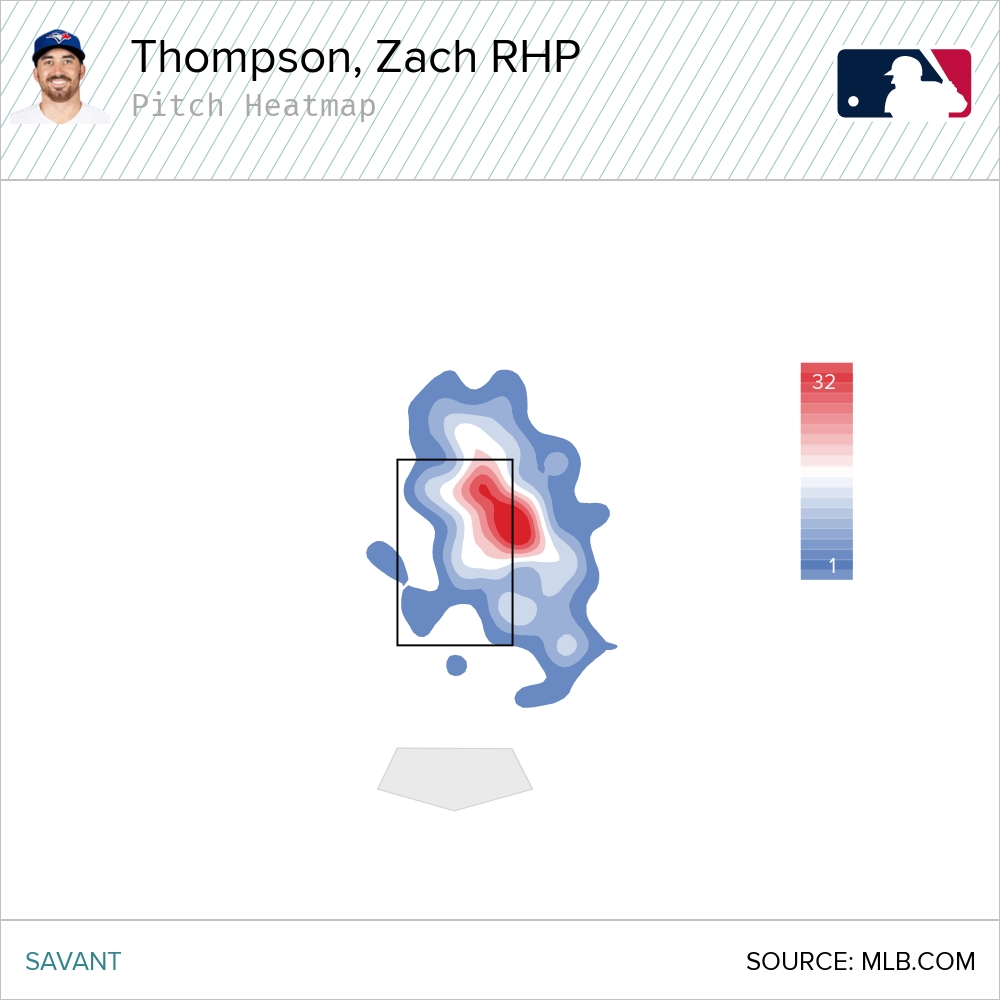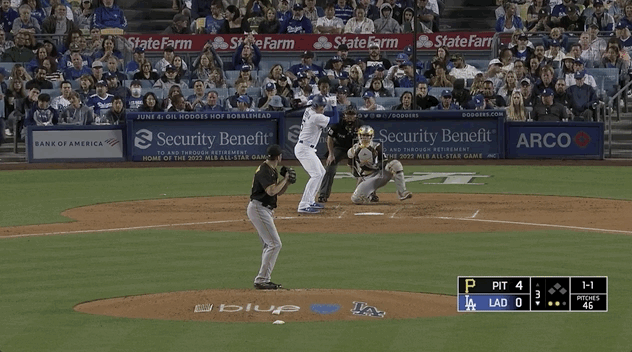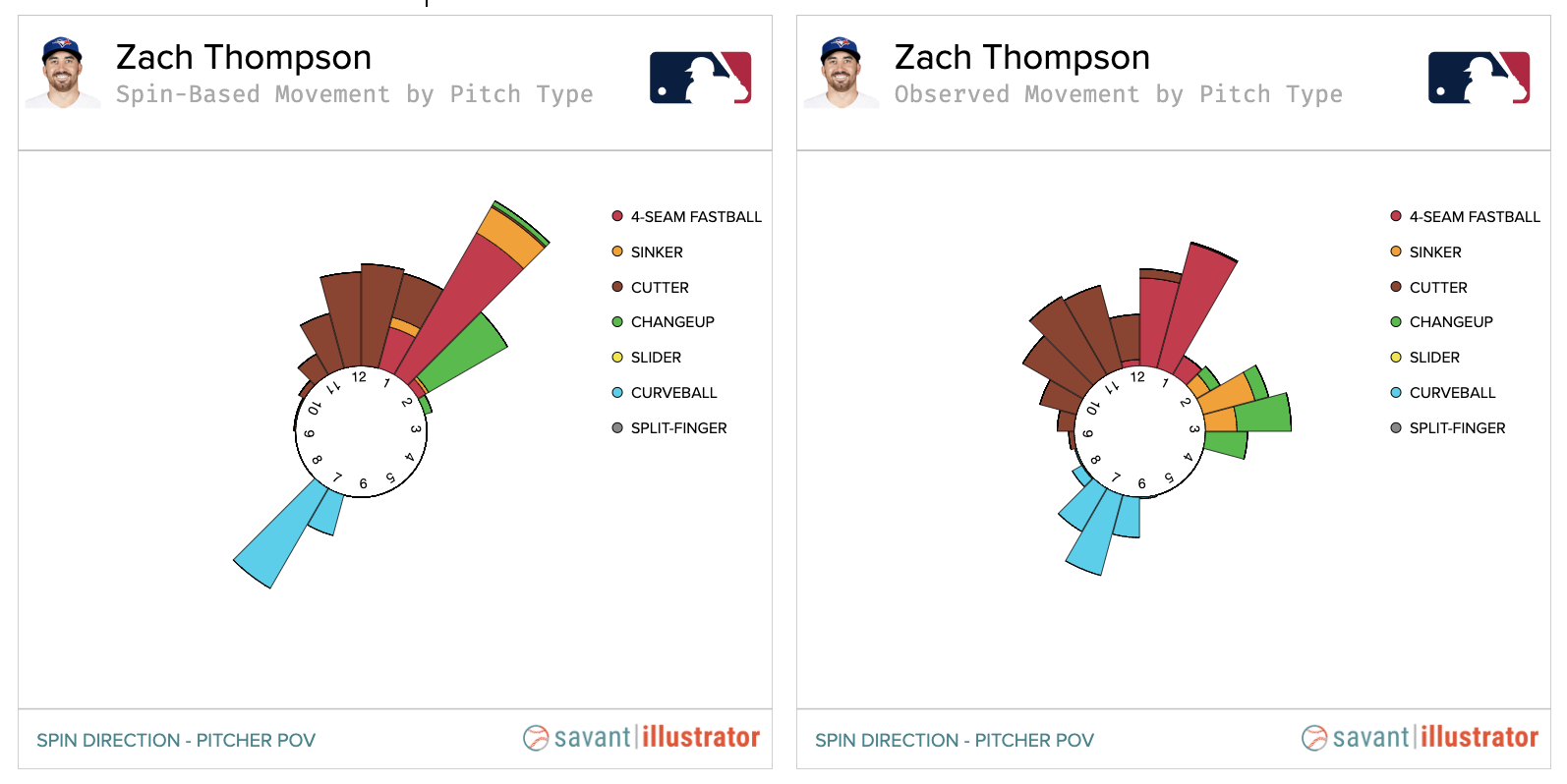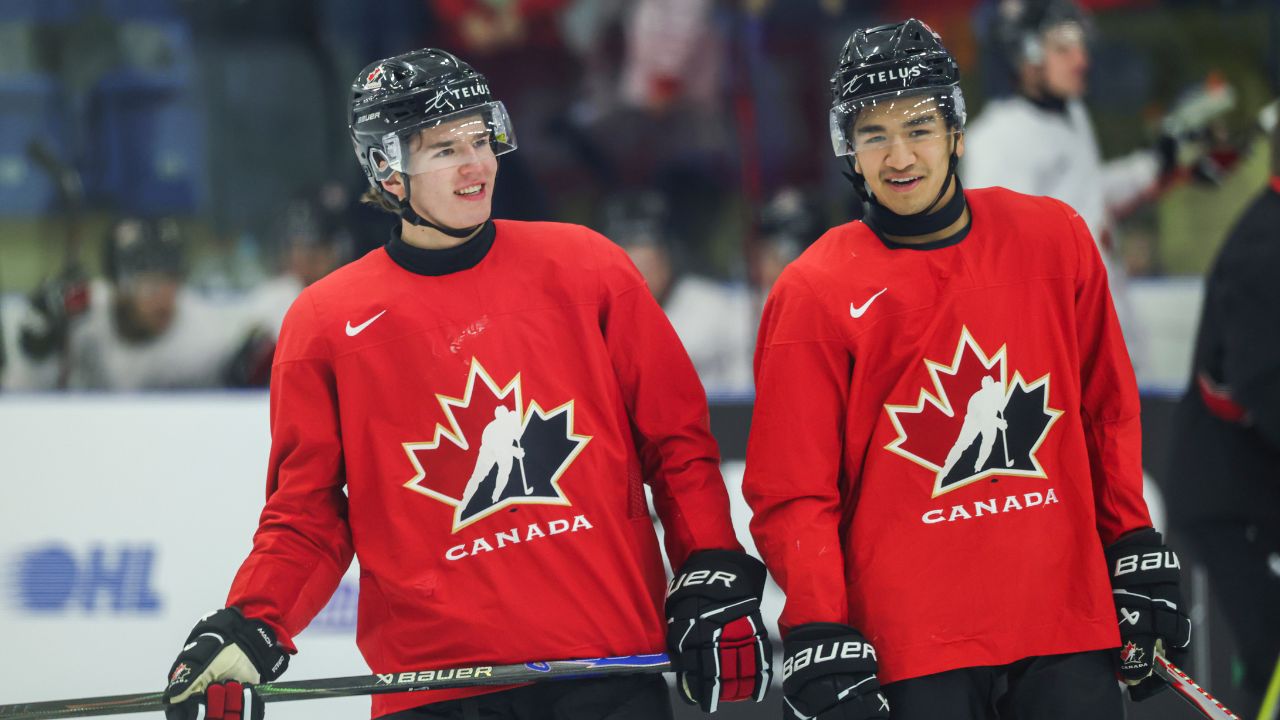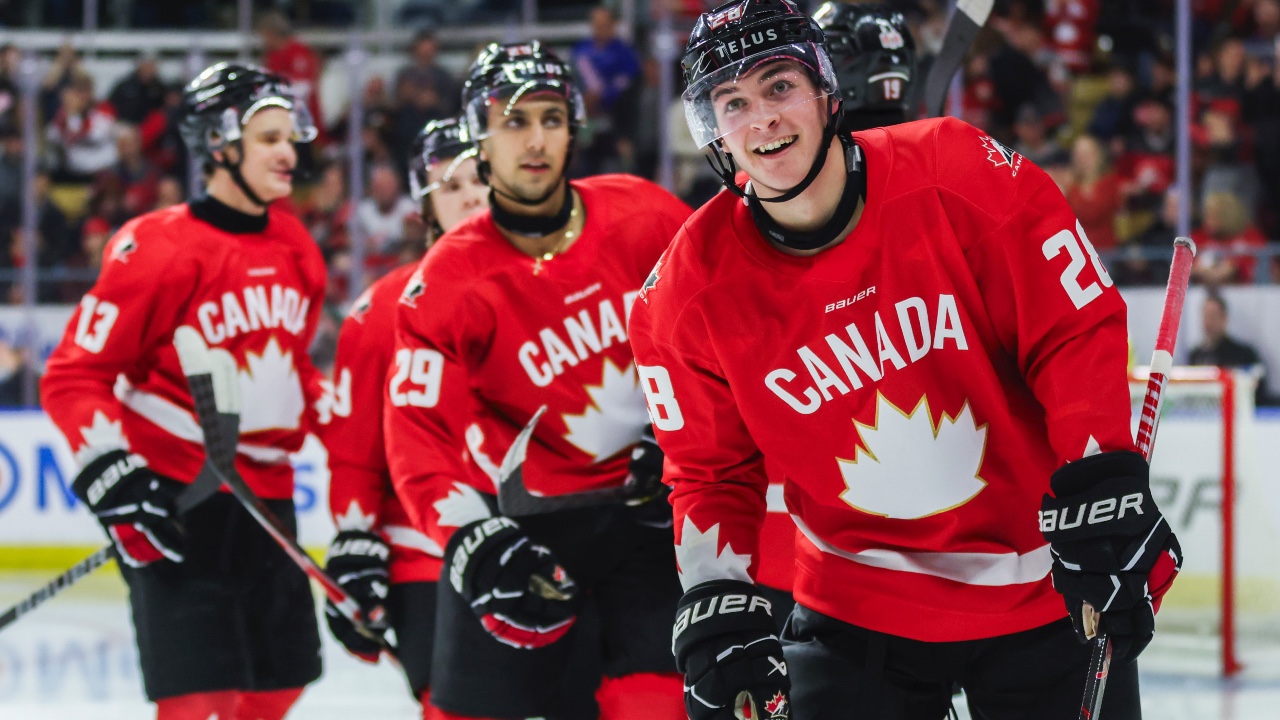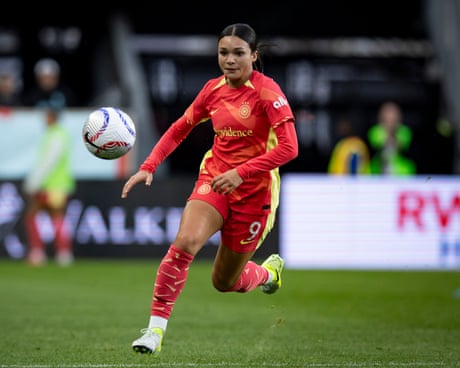
Editor’s Note: This story contains graphic descriptions of an operation, which may be distressing for some readers.
DUNEDIN, Fla. – Recently, as Zach Thompson sought to unwind after another long spring training day building up his arm for the regular season, the Toronto Blue Jays right-hander dove into one of his many hobbies and pulled up a nice, relaxing video of a surgeon performing a thoracotomy.
The half-foot incision opened beneath the scapula, the slicing of the sternum with a flexible wire saw, the cracking of bone as ribs are spread apart by hand, the excess lymphatic fluid draining neatly through the chest tube — it really takes the edge off.
“It’s a fascinating procedure. A lot of times it’s used for getting into the heart. If there’s been any type of stabbing or gunshots or something,” Thompson said. “I just like to refresh myself on how that process works. Breaking the ribs apart, getting in there with your hands. There’s so much you can always learn — it’s never-ending.”
You see, Thompson — a swing starter acquired by the Blue Jays in a trade with the Pittsburgh Pirates in January — studied kinesiology at the University of Texas at Arlington until he was drafted by the Chicago White Sox in 2014. And when the minor-league season was cancelled in 2020, he took the opportunity to complete prerequisites for a physician assistant degree, which he plans to pursue whenever his time throwing baseballs is up.
For the uninitiated, a physician assistant practices medicine under the direction and supervision of a licensed physician. They see their own patients, perform examinations, prescribe drugs and treatment. But for insurance and liability purposes, their work must be approved by the doctor they work under.
The primary differentiator for Thompson is that physician assistant school will mean only two-and-a-half years of studying before he can begin working in the field, as opposed to traditional medical school, which can stretch over the better part of a decade, including a lengthy residency. That’s a meaningful timeframe for a guy who wants to practice medicine but can’t begin the qualification process due to the minor matter of an MLB career.
“I can’t do it while I’m playing. I tried. I wanted to. But the classes are so consuming, the knowledge is so intense. It’s like a fire hydrant — it’s so much information,” Thompson said. “So, someday. I have a deep fascination and interest in it. I’d love to work in an emergency room. I’ve shadowed doctors in the ER and I love it. You have to be ready for heart attacks, gunshots, amputations on a moment’s notice. I loved that.”
For now, Thompson’s finding other applications of his physiological knowledge. When he enters the training room for work between outings, he doesn’t tell a physical therapist that his shoulder hurts — he says he’s experiencing discomfort in his teres minor. When a pitching coach is helping Thompson iron out movements in his delivery during a bullpen, they don’t simplify their language — they tell him to focus on thoracic extension and scapular posterior tilt.
And when a pitching analyst is explaining to Thompson why his once dominant cutter got hit around so often last season, they show him a heat map:
That’s where Thompson was locating cutters in 2022 to left-handed hitters, who responded by batting .378 against it, with a .778 slugging percentage. It’s one of the biggest reasons Thompson, who pitched to a 3.24 ERA over 75 innings as a rookie in 2021, regressed hard to a 5.18 ERA over 121.2 innings in 2022. He was pounding cutters in one specific location to left-handed hitters, who recognized it and began ambushing them. Freddie Freeman told Thompson about it on the field last May after hooking this 1-1 cutter for a double:
“That was a great cutter — up-and-in, off the plate. Perfect pitch. And he smokes it down the line,” Thompson recalled. “So, I looked at him at second base, and I said, ‘How did you hit that?’ And he said, ‘I knew it was coming.’ I was like, ‘How?’
“And it’s because that’s the only spot that I was throwing my cutter. I didn’t actually see it until I got traded here and the Jays showed it to me. I knew that we were using it a bunch and that we weren’t back-dooring as often — but I didn’t realize it was that consistent. Once I saw it, I was like, ‘Oh. I understand why Freddie was saying that.’”
In 2021, when left-handed hitters batted .186 with a .284 slugging percentage against Thompson’s cutter, he was more prone to moving it around the zone. He’d work east and west, targeting the outside edge often enough to prevent hitters from locking in on one side of the plate. During his first meetings with the Blue Jays at spring training, pitching coaches Pete Walker and David Howell told Thompson that if he could increase his variability, they felt he could recapture what worked so well for him in 2021.
“They said, ‘The weapons are there, the analytics are there for all your pitches. If we can just get you to vary your locations a bit more, then we think the numbers are going to drastically change,’” Thompson said. “So, we’re going to start mixing it up more. Because if you prove you can go to multiple areas, guys can’t sit on anything. They have to start respecting that about you. And then you start getting the swing-and-misses that I don’t usually get.”
Of course, Thompson’s success won’t come simply from moving his cutter around the zone. It will come from how he plays it off the rest of his repertoire. If he does execute a back-door cutter to a left-handed hitter, he has to play his sinker off it in the same lane. Similar thing with a right-hander — if Thompson can land a sinker on the inside edge to them, his cutter can move nicely off their barrel if he tunnels it effectively.
Thompson throws a four-seamer, too, with a good amount of spin that mirrors his curveball. Depending on the day, it might be a better weapon for him to play off his cutter. Some lineups will be more susceptible to those spinning heaters up in the zone; some days, it’ll just be coming out of Thompson’s hand better than his sinker is.
And even at 29, in his ninth professional season, Thompson’s still figuring himself out. Early in camp, the Blue Jays showed him slow-motion video captured with a high-speed camera that opened his eyes to how he throws his sinker. He’d always thought he created life on the pitch by pronating his arm. But what’s truly producing the drop is the way he releases the ball from his fingertips and the orientation of its seams as it nears the plate, which creates a phenomenon called seam-shifted wake.
Thompson’s cutter also gets a great deal of seam-shifted wake, which, in simplistic terms that belie a profoundly complex aspect of pitch behaviour, creates an optical illusion for hitters, who expect it to reach the plate in one location while it’s headed for another. Perhaps the best way to illustrate this effect is with these Baseball Savant spin movement graphics:
Note how the actual movement on Thompson’s cutter registers toward 12 o’clock, while the observed movement — what hitters see in the two-tenths of a second they have to decide whether or not to swing at a pitch — is closer to 10:30. Ever heard someone describe a pitch as featuring “late life?” That’s what this is. And in 2021, Thompson’s cutter ranked top-10 MLB-wide in spin-movement deviation, his changeup top-15 and his sinker top-50.
Much of what the Blue Jays have been working on with Thompson in spring training is showing him this effect, helping him understand what it does to his pitches, and playing around with his four-seam fastball grip and release to hopefully create similar action. Pairing that work with new sequencing and a commitment to attacking different areas of the zone has Thompson confident he can reproduce the 130 ERA+ results he enjoyed in 2021.
“We’re trying to get back to what I was doing in Miami. That year is who I am as a pitcher, I would like to think,” Thompson said. “And I think having the command to go to different locations on the plate is something that will get me back there. Working east and west, north and south. Using five pitches and really varying them. Maybe this day it’s the sinker on the cutter and the changeup. Whereas the other day it was four-seam, curveball, cutter.”
Right, we failed to mention that Thompson throws a high-70s curveball that produced a 44.8 per cent whiff rate last season and that his mid-80s changeup features well above-average vertical movement. We won’t get so deep into the weeds on those offerings, but they’re worth mentioning as they give Thompson a pair of slower pitches to attack sped-up hitters trying to time one of his three fastball variations.
Thompson feels confident throwing any of those five pitches in any count to either side of the platoon. There are obviously parts of the zone he needs to stay away from with certain offerings, and particular swing paths to avoid with others. But that’s what scouting reports are for.
Thompson can craft unique gameplans from outing to outing based on which pitches are working for him and where the opposition’s weaknesses lie. It’s the same approach Ross Stripling used to pitch to a 3.01 ERA over 134.1 innings for the Blue Jays in 2022, which helped him land a two-year, $25-million free-agent deal with the San Francisco Giants following the season.
“I know we grew up on this idea that you don’t throw certain pitches to certain batters, but I’m not about that,” Thompson said. “I don’t care what batter’s in there. I have five weapons to throw to this dude. Righty or lefty, I don’t care. I’m going to throw what I need to throw to get him out.”
Thompson’s role to begin the season could look like the one Stripling held with the Blue Jays over the last two, as well. With Mitch White just now beginning to throw in bullpens after a right shoulder impingement delayed his off-season throwing progression, Thompson is the first layer of starting depth beyond the obvious five positioned to fill out Toronto’s season-opening rotation. He’s only an injury or ill-timed doubleheader away from making spot starts in a Blue Jays uniform.
He also has experience pitching in relief and could serve as a swingman if the Blue Jays want to carry some length in their bullpen. And with all three of his minor-league options remaining, the club could start him at triple-A to continue taking turns as a starter and serve as insurance in case a need arises down the road.
Like the emergency-room doctor he one day aspires to be, Thompson’s ready for anything the Blue Jays throw at him. Starts, bulk bullpen outings, one-inning relief. Heart attacks, gunshots, amputations. Attack zones, release points, seam-shifted wake. Few understand better than Thompson that the learning process for a pitcher, for a surgeon, for a practicing physician — it’s never-ending.
“I’m very excited to be here. I’m able to learn from these other starters like Chris Bassitt and Kevin Gausman — guys that are Cy Young-capable. Alek Manoah, third in Cy Young voting last year. I’m just thrilled to even be in the mix, to be a part of this group,” Thompson said. “It’s an elite pitching staff. And I know what I can do. I know that I can hang with these guys every step of the way. And anything I can learn from them to help me get to that point, I’m all ears. I want to be a part of it for as long as I can.”


